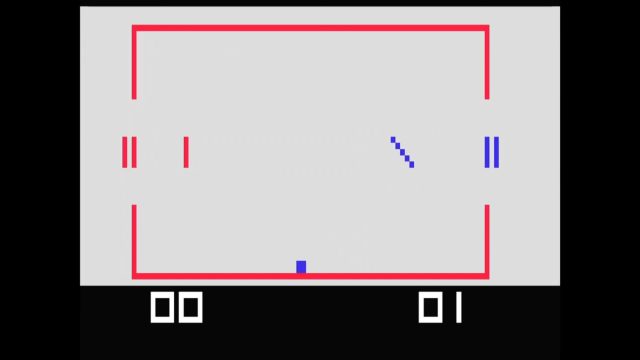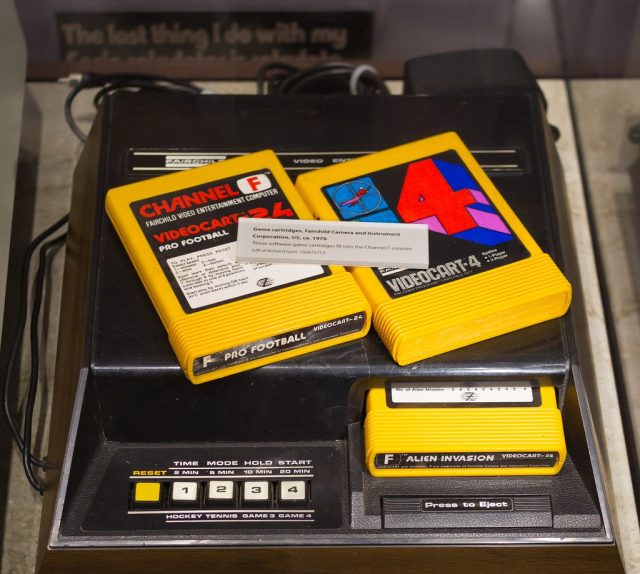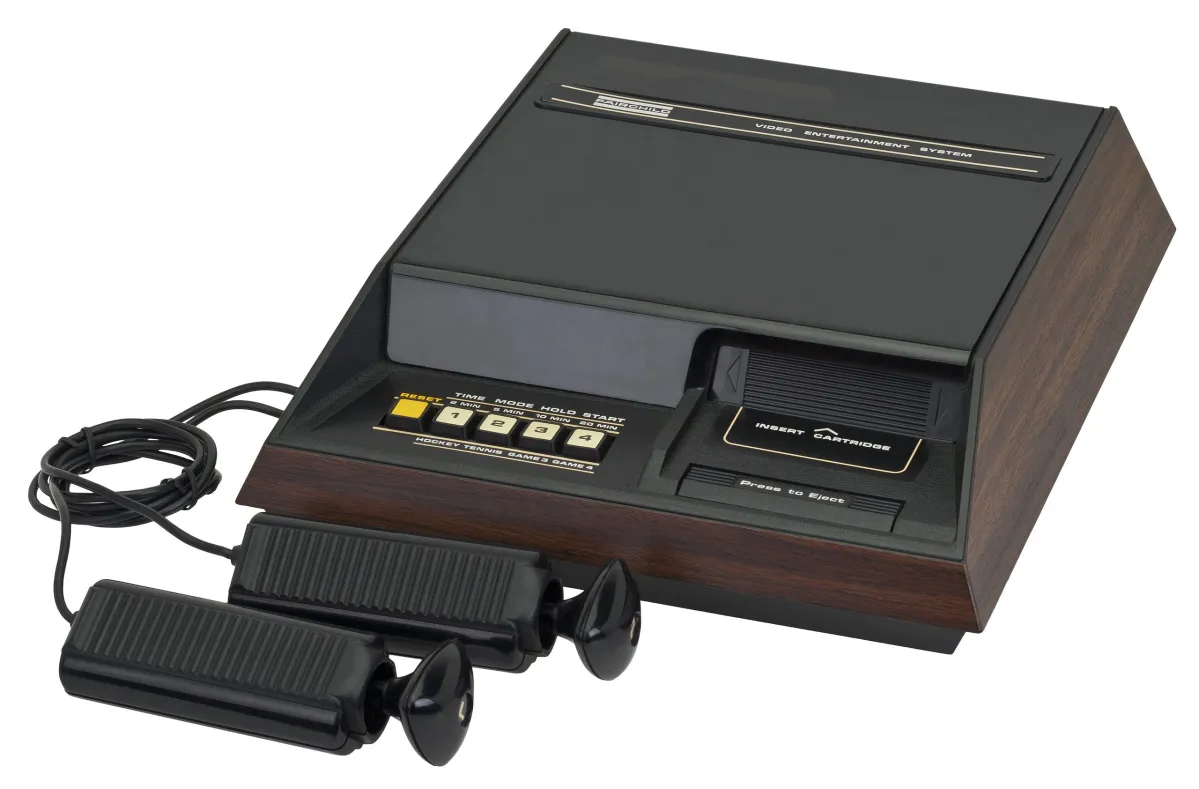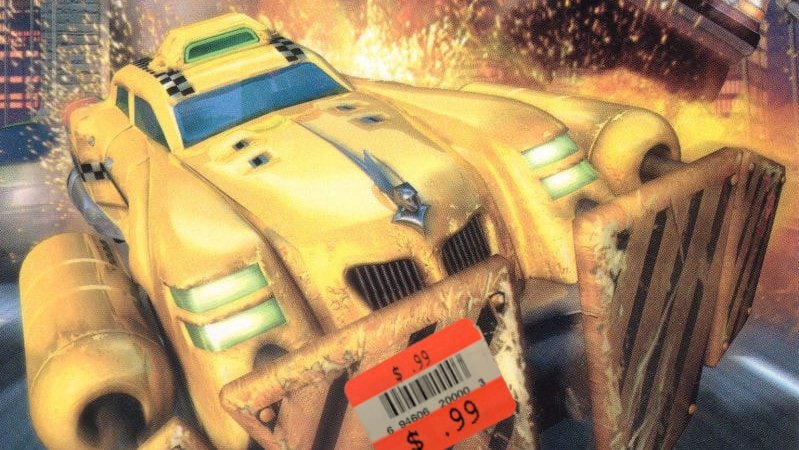Yes, it’s even older than I am
The history of video games only really gets interesting in 1977 with the release of the Atari VCS (2600) and the trinity of the Commodore PET, Apple II, and TRS-80 computer systems. Before that is the dark ages. Video games existed, but they were largely compiled in gargantuan mainframes by university students in their spare time. Sometimes they’d be found in whizbang arcade cabinets or made by people dabbling in computer engineering in their garage or basement.
But the history of video games is also murky as a cesspool. Consoles actually started back in 1972 with the Magnavox Odyssey, which largely fits our current definition of a console. You hold a controller, you put in a game, and you play on a screen. However, the games weren’t actually the ROM cartridges we’d become familiar with in later consoles. Instead, they were just jumper circuits that would activate specific parts of the console.
The first console to actually use cartridges that contained a program and not just an inert circuit was 1976’s Fairchild Channel F, predating the Atari VCS by a year. Finally, a game was contained in a portable case and not just built into the console. It was a world of opportunity! Except it didn’t really go anywhere.

Fairchild was a major player in the development of the monolithic integrated circuit and the microprocessor. While they’d largely be overshadowed by Intel and Zilog’s developments, the Fairchild F8 had its day. To show it off, they slapped that baby into a console. There was a kit computer, the Fairchild CPU-8, but I have no idea how to make kit computers sound interesting and it’s also a different topic.
Actually, it’s pretty difficult to make any console of this vintage sound interesting. The games were so primitive that the modern metrics I use to compare games from the ‘80s to today just don’t fit. Do you want Pong? That was called Tennis, obviously, and it was built directly into the console along with Hockey, which was also basically Pong. Honestly, though, Pong was closer to air hockey than it was to tennis anyway.
For its time, the system was capable, rocking the F8 8-bit processor and a whopping 64bytes of RAM. It had a palette of 8 colors and could output at resolutions of 128×64. The original model also had an internal speaker, which is possibly the worst way to experience sound. Later models would output sound through the TV speaker, but in 1976, the rulebook was still being written.
The controllers are also something special. While they first appear to be a simple joystick at the top of a grip, the short knob can actually be twisted, pressed in, and pulled out. That’s more ambitious than Atari’s simple joystick and button, but it takes some getting used to because there hasn’t been anything like it since.
The downside is that the controllers were hardwired into the system, which wasn’t very uncommon for the time, but is a pain in the ass today.

It’s just kind of sad that Atari gets all the attention. The VCS wasn’t that much more advanced. Yet, by the time Fairchild cashed out and passed the technology onto Zircon in 1979, it had only sold 350,000 units, whereas Atari’s little console sold tens of millions in its lifespan.
Some attribute this to the kind of games that landed on it. An eyebrow-raising number of them were gambling and educational titles, a great mix of genres to prepare any child for the real world. Many of the other games were either primitive sports titles or interpretations of board games like Checkers. When the 1980s rolled around, the system got interpretations of Lunar Lander and Space Invaders. While they were reasonable facsimiles, by that point, Atari was already leagues ahead.
It’s really not to say that the games are worse than the competition. They’re primitive, but not any more than what would come from other companies.

[Image Credit: Michael Dunn]
Even with that said, the reason we aren’t playing with our Fairchild Channel F minis or firing up the Fairchild Channel F Extreme Remix Collection is mostly because of timing. A year isn’t a lot of time for a console to stretch its legs, even in those days. When Atari released their console, it went flying past and the Channel F had no hope of catching it.
The Atari VCS was better at a hardware level in a lot of ways. It had better resolution, didn’t rely on an internal speaker, and the controllers could be disconnected and changed out for other control methods. More than that, though, Atari was already a big name at a time before the industry really had any big names. It was able to put games on its console with names people recognized. Asteroids, Defender, Pong; people already knew these games and trusted that their quality would be similar to what they already played. Those fools!
Meanwhile, Channel F had games like Videocart-13: Robot War, Torpedo Alley. If you got the Channel F in 1976 you probably still would have got your enjoyment out of it. It was new and interesting, and not that much worse than what Atari would bring the next year. But as the years wore on and Atari’s marketing machine got into gear, the grass would definitely seem greener.
[Header Image Credit: Evan Amos]




Published: Dec 11, 2021 08:00 am